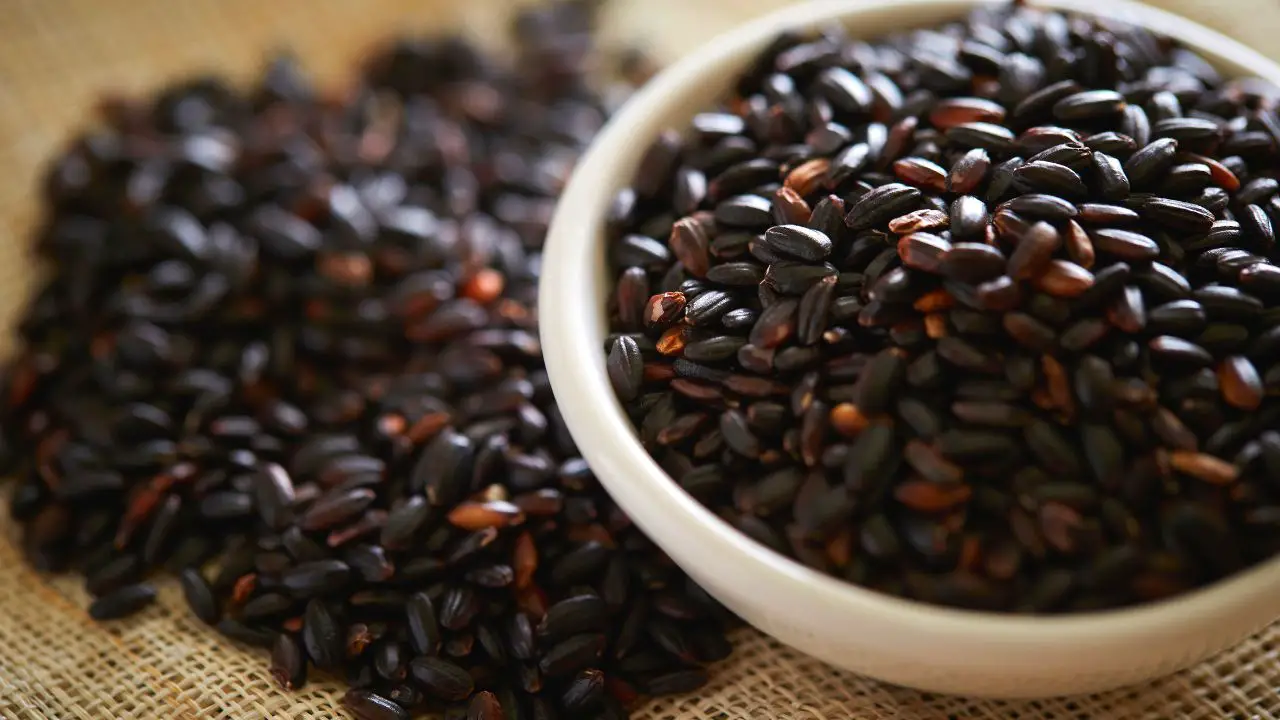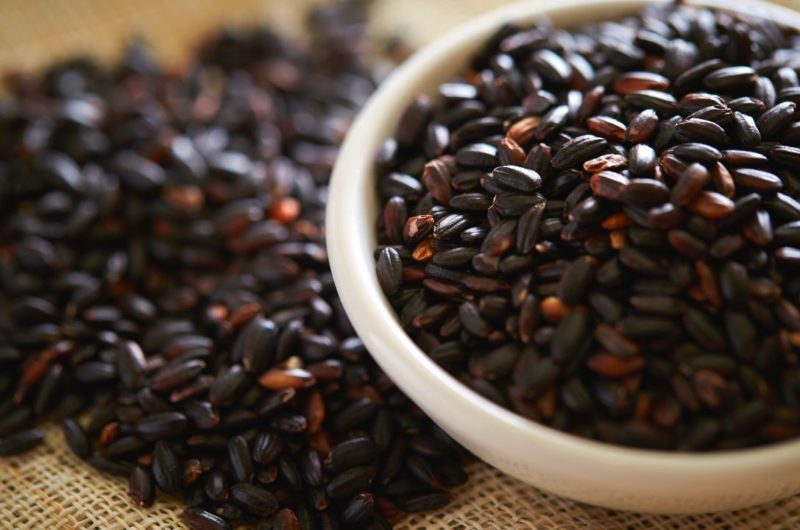Unlock the Forbidden: How to Cook Perfect Black Rice with the Ideal Water Ratio.
There are many types of rice, each with its own unique flavor, texture, water ratio, and cooking method. Figuring out the tricks and nuances of cooking rice has a prominent learning curve. This is particularly true for less common varieties such as black rice, but it does not have to be that complicated.
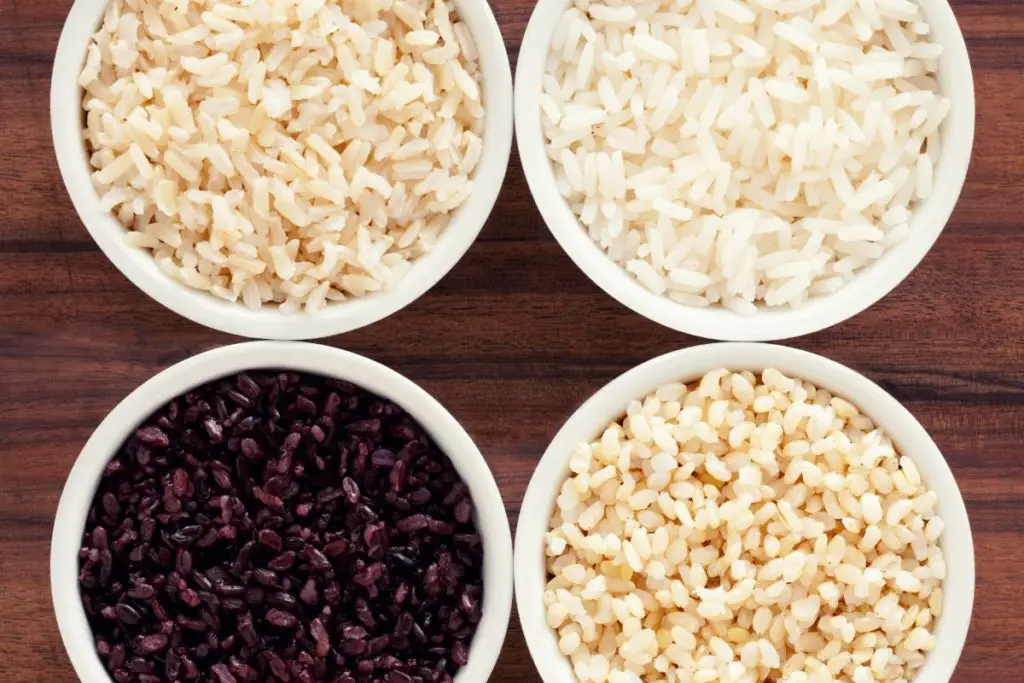
To achieve the ideal boiled black rice, simply abide by the standard 1:2 ratio of water to rice that applies to most rice types. This means using roughly two cups of water for each cup of black rice, with minor adjustments based on your desired texture.
But there is more to consider than just the black rice to water ratio when cooking it.
Here are two different preparation methods that are proven to give you the best result.
What Is Black Rice?
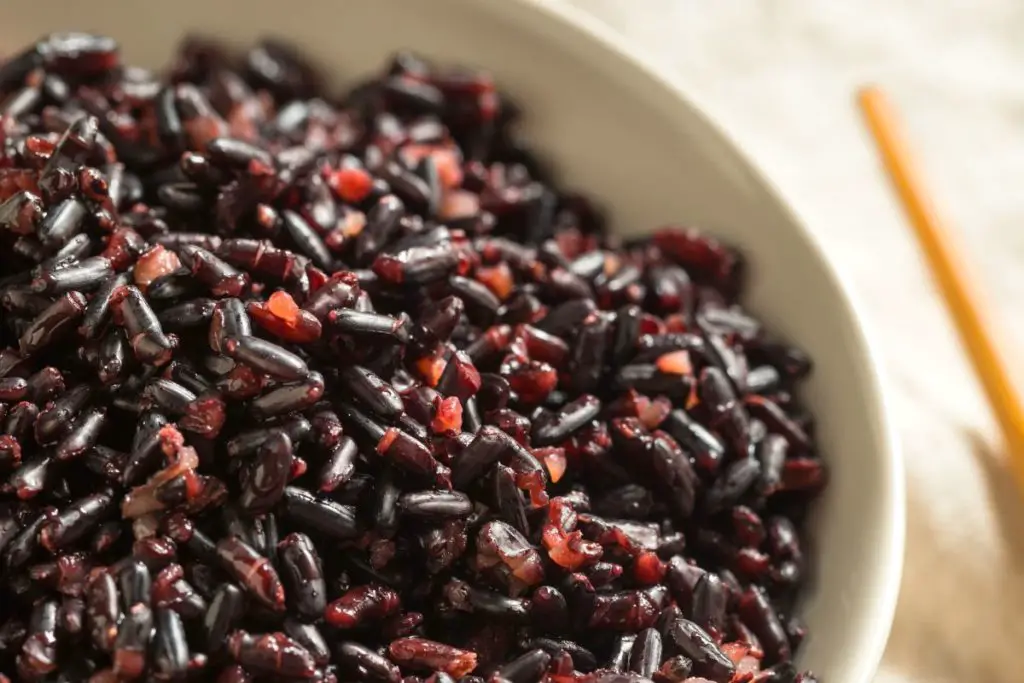
Black rice—also known as forbidden rice—is an exquisite whole-grain variant with a beautiful purple hue that looks almost black. It originated in China, and its name comes from its forbidden consumption in the country, as it was reserved exclusively for the emperor and other nobility [1].
Part of black rice’s exclusivity comes from its difficult cultivation and harvesting process, making it more expensive than other rice varieties. However, the benefits make it worth it.
Beyond its delicious nutty flavor with sweet undertones, black rice is also rich in anthocyanins, pigments that give the rice its distinctive color and are a valuable help for your cells against damage.
Black rice also boasts anti-inflammatory benefits and assists against cardiovascular conditions. Likewise, it is also rich in fatty acids, amino acids, antioxidants, flavonoids, and vitamins and minerals such as B2, B3, calcium, potassium, iron, and more [2].
How Do You Cook Black Rice?

Cooking black rice can be a little intimidating, but it is not as complicated as you may think.
Black rice does not require pre-soaking before cooking, and you also do not need to wash or rinse it, as it can make the rice lose some of its nutrients and starch for a more sticky texture. After that, you can follow two preparation methods: traditional absorption or straining methods.
While both methods can produce perfectly cooked black rice, the absorption method is generally considered better for several reasons.
First, the absorption method allows the rice to retain all its nutrients, since the rice is cooked in the water and absorbs it all.
On the other hand, the straining method involves discarding the excess water, which can result in some of the nutrients being lost.
Additionally, the absorption method is more forgiving and less risky than the straining method, which requires careful monitoring to avoid overcooking or undercooking the rice.
Finally, the absorption method is more consistent and reliable, since the amount of water used can be precisely measured to achieve the desired texture and consistency of the rice.
Absorption Method (Recommended)
| Black Rice To Water Ratio | Cooking Time |
|---|---|
| 1:2 | 30-40 minutes |
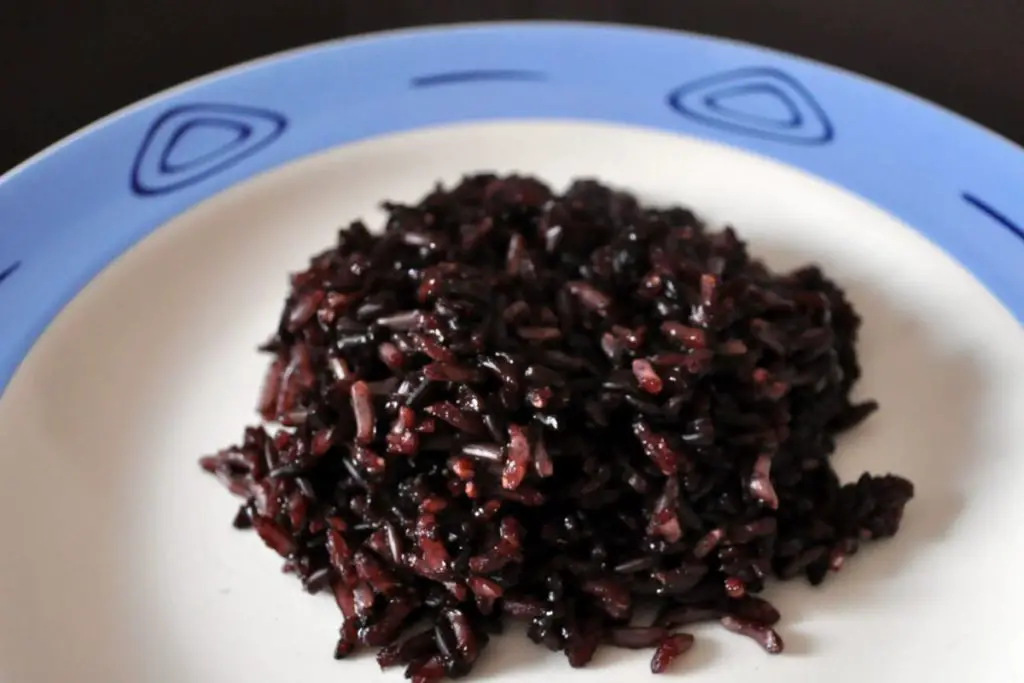
This traditional method is the ideal way of cooking black rice. You will require twice as much water, broth, or bouillon as you have rice—for example, two cups of water per single cup of rice.
In addition, I recommend adding ¼ teaspoon of salt per cup of rice.
- Pour the water and rice into the saucepan and bring to a boil over medium-high heat.
- Add the salt once the water starts boiling, then reduce the heat to low and cover with a lid.
- Let the rice cook for half an hour to 40 minutes, depending on the quantities you’re making.
Note: In case the rice is not fully cooked but all the water has evaporated, you can add 2 to 3 tablespoons of water and cook for an additional 5 minutes. This can help ensure that the rice is fully cooked without burning or sticking to the pot.
Straining Method – “Cook It Like Pasta” Method
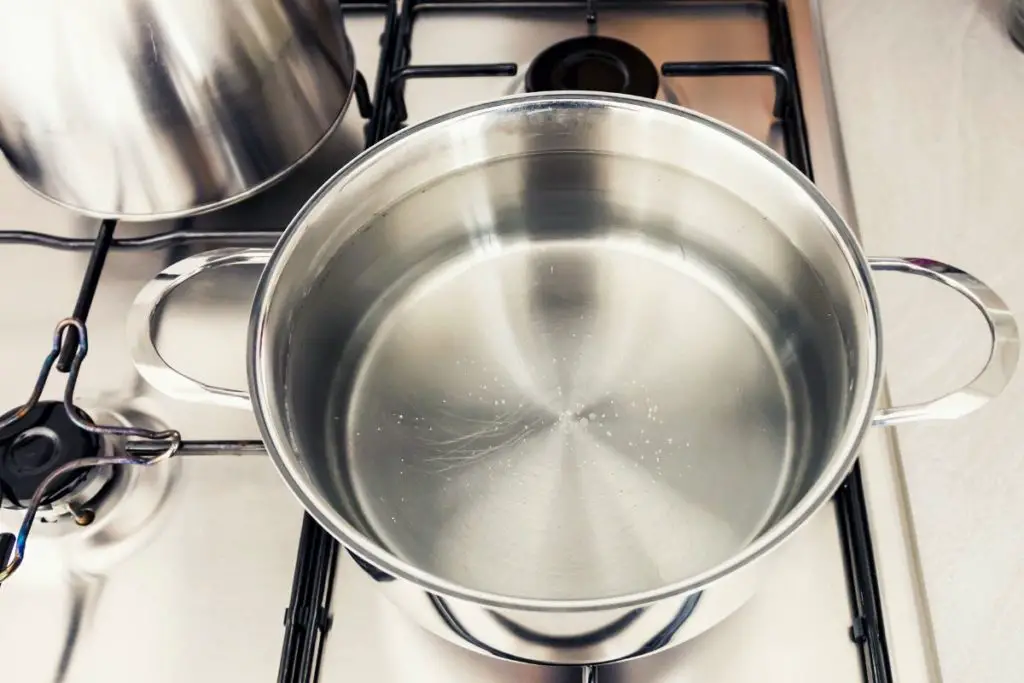
Although the aforementioned rice-to-water ratio is perfect for cooking black rice, it is not the only cooking method available. The ‘pasta method,’ although disputable, is often used for cooking whole grain rice, such as black rice.
The method of straining off the excess water, similar to the way you cook pasta, can produce perfectly cooked grains if done right.
- Start cooking the rice in cold, abundant water and checking the grain for consistency once the water starts boiling.
- Keep boiling on medium heat and once the grains have reached the desired texture, discard the rest of the liquid through a strainer.
By following this method, you do not need to concern yourself with the water-to-rice ratio, which allows for more freedom regarding the cooking process, and you only need to judge for doneness according to your taste.
However, you risk losing essential nutrients in the strained water, and you may need to keep a close eye on the rice to make sure it won’t get smushy and overcooked.
Frequently Asked Questions
Here are some frequently asked questions about black rice.
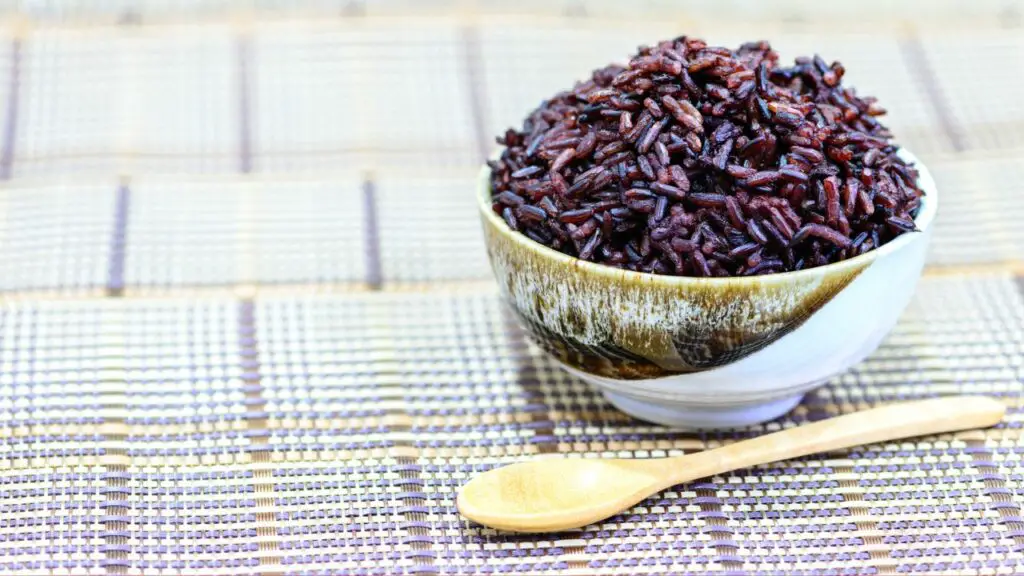
What does black rice taste like?
Black rice has a nutty and slightly sweet flavor with a tender yet chewy texture. It has a subtle earthy aroma and a delicate floral aftertaste. The flavor profile of black rice pairs well with savory dishes and sweet preparations such as desserts and puddings.
Do you need to soak black rice before cooking?
It’s not necessary to soak black rice before cooking, but it can help to reduce the cooking time slightly and improve the texture. If you’re short on time, you can skip soaking and simply adjust the cooking time accordingly.
Is black rice better than brown rice?
Black rice and brown rice are both considered to be healthier alternatives to white rice because they are less processed and retain more of their natural nutrients. Black rice is often touted as being even more nutritious than brown rice, as it contains higher levels of antioxidants and anthocyanins, which give it its distinctive black color. However, both types of rice can be incorporated into a healthy diet, and the choice between them ultimately depends on personal preference and nutritional goals.
Can you cook black rice in a rice cooker?
Yes, you can cook black rice in a rice cooker. Simply add the rinsed rice and water to the rice cooker according to the recommended black rice to water ratio, and then select the brown rice or black rice setting if available. The rice cooker will automatically adjust the cooking time and temperature, making it a convenient and foolproof way to cook black rice.
Read Also: How To Flavor Rice With Spices – (5 Easy Ways To Jazz Up The Taste And Color).
Conclusion? Not as hard as it looks!
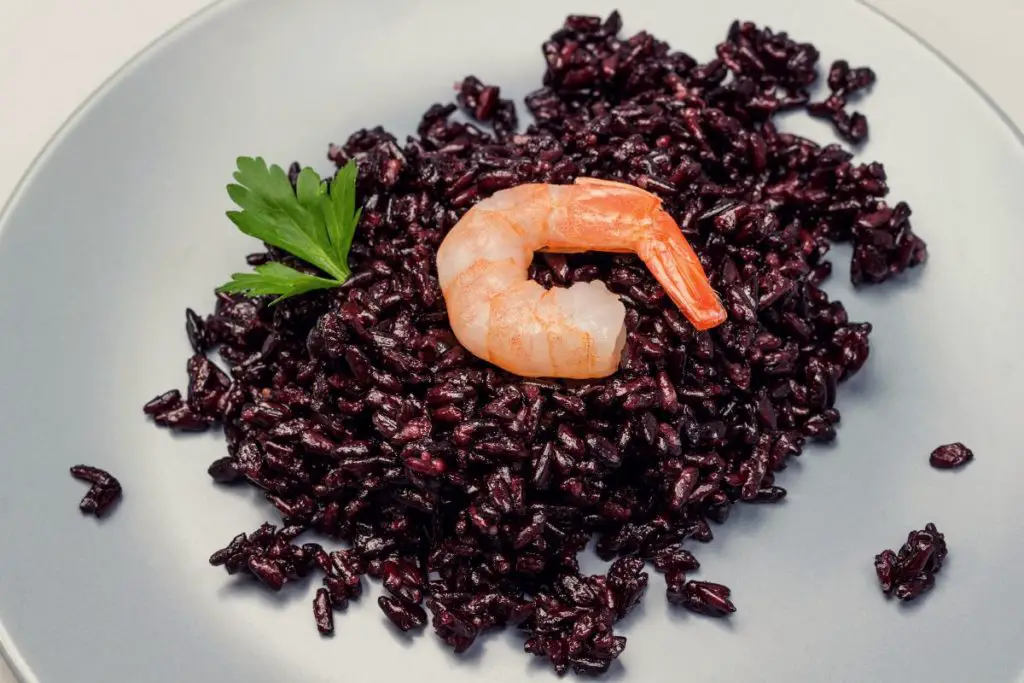
There is nothing forbidden about black rice anymore, so don’t feel guilty when cooking and eating it. Its rice-water ratio is standard and easy to remember. It is also high in fiber, naturally gluten-free, and it’s a rich source of nutrients.
Black rice is also a nutritious and flavorful alternative to traditional white or brown rice. It can be easily prepared using the absorption method or a rice cooker and pairs well with a variety of dishes.
So why not give it a try and add some color and variety to your meals with black rice?
References:
- [1] Rotkovitz, Miri (2020) Black or Forbidden Rice. Retrieved from https://www.thespruceeats.com/what-is-forbidden-rice-1664717
- [2] Brennan, Dan (2020). Black Rice: Health Benefits, Nutrition, and Uses. Retrieved from https://www.webmd.com/diet/health-benefits-black-rice
